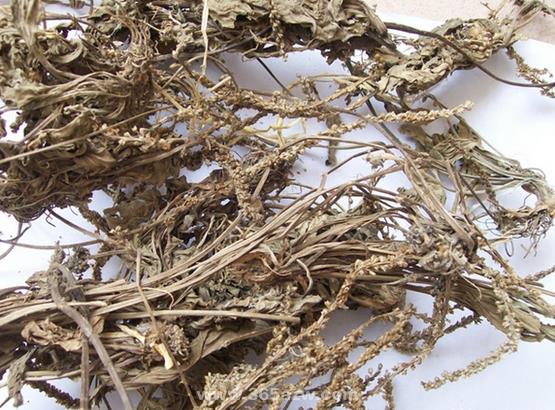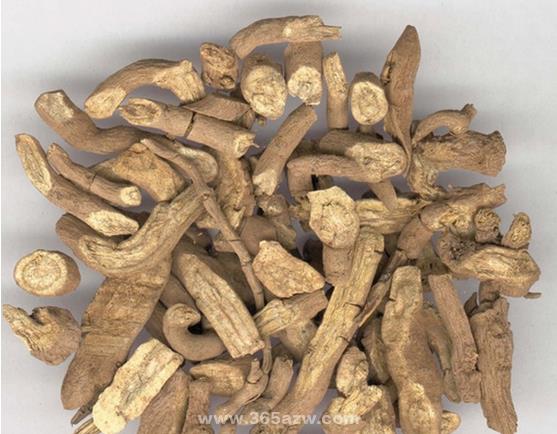The efficacy and function of Aristolochia mandshurica the difference between Radix Aucklandiae and Radix Aucklandiae
Green wood incense was a nickname for wood incense in ancient times, which refers to high-quality wood incense. And our current green wood incense was called green wood incense in the Tang Dynasty, so the name caused a lot of confusion. The vine of its plant is called Tianxianteng, and its fruit is called Aristolochia. Let's learn more about Auckwood incense.

I. the efficacy and function of Aristolochia mandshurica
The efficacy of green wood incense
1. Pain in chest and abdomen
This product is bitter diarrhea, the main into the liver and stomach meridian, can carry out qi and soothe the liver, and relieve pain. For the treatment of chest pain and epigastric pain caused by stagnation of liver and stomach qi, it is effective to take it alone, or it can be used with Cyperus roxburghii, toosendan seed, bergamot, etc.
2. Diarrhea and abdominal pain
This product is bitter and cold, clearing heat, detoxification and filth, flavoring pungent qi and relieving pain. It is advisable to take fresh pounding sauce service or dry product research final service, or compatible with Pueraria lobata, Coptis chinensis, wood incense, etc., to treat the unclean diet in summer, diarrhea and abdominal pain caused by internal obstruction of summer dampness.
3. Eczema, skin dampness, snakebite
This product is bitter cold, has the function of clearing heat, dryness and dampness, detoxification and detumescence. For the treatment of furuncle swelling and poison, you can study the powder alone, adjust the application with honey, or mash it with fresh products; if you treat wet skin sores, you can wash this product with boiling water and sprinkle it externally, or mix it with alum, gallnut, calamine, etc.; for the treatment of poisonous snake bites, it is compatible with Angelica dahurica, internal and external use, or with andrographis paniculata, flea rest, etc.
The function of Radix Aucklandiae
1. Depressurization
The crude preparation of Radix Aucklandiae has the effect of lowering blood pressure, and its effective ingredient is Magnolia mandshurica.
2. Vomiting
Its acidic components have emetic effect and can cause nausea and vomiting. The refined extract had no obvious effect on intestinal movement.
3. Bacteriostasis
Aristolochia mandshurica has different inhibitory effects on Staphylococcus aureus, Pseudomonas aeruginosa, large intestine, Proteus and other bacilli.
4. Improve immunity
Aristolochic acid can improve the immune function of the body and enhance the phagocytic activity of peritoneal macrophages. Studies have confirmed that aristolochic acid has a certain mutagenic and carcinogenic effect.
5. Effect on smooth muscle
The extract of Aristolochia mandshurica had no effect on the movement of isolated rabbit intestine and uterus. The intestinal motility of anaesthetized dogs and dogs with chronic intestinal fistula was slightly inhibited by intravenous injection, but not even at an oral dose of 10 times.
6. Anticancer effect
Mouse sarcoma 37 cells were completely inhibited when incubated with aristolochic acid 100-200mcg for 3 hours. After transplanting sarcoma 37 cells in mice, 1m aristolochic acid 2.5-5mg/kg/d for 30 days, the growth inhibition rate was 40-50%, and mouse sarcoma 37 was subcutaneously injected with aristolochia for 5 days to significantly prolong the survival time of mice. Aristolochic acid also had inhibitory effect on adenocarcinoma-775 in mice, and acetone extract from its stem could inhibit the solid type of Ehrlich ascites carcinoma in mice.
7. Effect on gastrointestinal tract
Folk use of green wood incense to treat abdominal pain, clinical use of its crude preparation, but also cause nausea, vomiting and dizziness and other side effects. The emetic effect of Aristolochia mandshurica is mainly caused by the ether-soluble acidic components, and the essential oil can also cause vomiting, but the effect is weak. Neither of these two ingredients can reduce blood pressure, so this side effect can be eliminated after purification. The refined extract had little effect on the movement of isolated rabbit intestine, but slightly inhibited the intestinal movement of in situ intestine (anaesthetized) and chronic intestinal impotence (unanesthetized) during intravenous injection, even if the oral dose was increased by 10 times.
8. Other
The crude preparation of Radix Aucklandiae has a sedative effect on mice. The refined extract had no effect on the chemical receptors in the isolated rabbit uterus and the spleen and lower limbs of cats. At high doses, it has some effects on chicken malaria and in vitro inhibition of dysentery bacilli.

Second, the difference between green wood incense and wood incense
Although there is only one word difference between wood incense and green wood incense, the difference between wood incense and green wood incense is very big. Both wood incense and green wood incense are the dry roots of Compositae plants, but wood incense is the dry root of wood incense, while green wood incense is the dry root of Chuanmuqiao or Huimaochuan wood incense, which belongs to two completely different plants.
1. Muxiang is cylindrical or semi-cylindrical in shape, with a length of five to ten meters and a diameter of 0.5 to five meters. Its surface is grayish brown or brown, the texture is hard, not easy to break, its cross section is brown to dark brown, the taste is slightly bitter. Aristolochia mandshurica is cylindrical or semi-cylindrical with longitudinal grooves, slightly curved, with a length of 10 to 30 meters and a diameter of between 1 and 3 meters.
2. In addition to the different sources of plants, there are also great differences in pharmacology between Radix Aucklandiae and Radix Aucklandiae. Wood incense specializes in relieving pain and its nature is warm, so it is most suitable for deficiency and cold qi stagnation, cold condensation qi stagnation and damp qi stagnation. If the air is blocked by heat, it must be matched with cold medicine. And green wood incense, its nature is cold, in addition to relieving pain, it can also calm the liver, relieve wind, detoxify and detumescence, and the treatment of qi stagnation is suitable for those caused by heat.
3. The aroma of green wood can stagnate qi, bitter can dissipate qi, and sexual temperature can be warm. Always take Xing Qi stagnation as its strong point, good practice of intestine and stomach qi stagnation and relieving distension and pain, and liver and gallbladder qi stagnation, which is an important medicine for Xing Qi to relieve pain, which is widely used in qi stagnation and other diseases. If spleen deficiency and qi stagnation, green wood incense can be used with Codonopsis pilosula, Atractylodes macrocephala and Amomum villosum, such as "Shi Fang GE Guo" Xiangsha Liujun decoction; if overeating, diet does not change and cause abdominal pain, use green wood incense with green skin, betel nut, rhubarb and so on, such as the medical prescription set solution "wooden chamomile betel nut pill; if spleen and stomach qi deficiency, eating qi stagnation, can be equipped with Amomum villosum, Atractylodes macrocephala, and so on, such as" Sheng Sheng Secret Section "Xiang Sha Ji Shu Wan.
4. Qingmu Xin San bitter diarrhea cold, return to the liver and stomach meridian, in addition to relieving pain, but also calming the liver and extinguishing wind, detoxification and detumescence. For the treatment of distension pain caused by qi stagnation of liver and stomach, and waist and abdomen distension pain caused by stagnation of liver and stomach, take single powder or AT agent, and can also be mixed with other qi analgesics; for the treatment of dizziness and pain caused by hyperactivity of liver-yang, it is often made into single use of liquid extract, or mixed with stone cassia, cassia seed, white peony, etc., and taken internally in decoction.
Modern research shows that Aristolochia mandshurica contains volatile oil, which is mainly composed of aristolochia ketone, magnolia and so on. Radix Aucklandiae decoction has obvious antihypertensive effect on hypertension caused by various causes, the mechanism of action is related to the integrity of sympathetic nervous system, and its effective component Magnolia mandshurica has a significant antihypertensive effect on renal hypertension. The p-soluble acidic components contained in Radix Aucklandiae have emetic effect.

Through the above introduction to Aristolochia mandshurica, it is believed that you have a deeper understanding of Aristolochia mandshurica. Although there is only a word difference, the difference is far-reaching. Don't get confused in the future.
It can also be used to treat dizziness and pain caused by hyperactivity of liver-yang, often made into liquid extract alone, or mixed with stone cassia, cassia seed, white peony, etc., and taken internally in decoction.
Modern research shows that Aristolochia mandshurica contains volatile oil, which is mainly composed of aristolochia ketone, magnolia and so on. Radix Aucklandiae decoction has obvious antihypertensive effect on hypertension caused by various causes, the mechanism of action is related to the integrity of sympathetic nervous system, and its effective component Magnolia mandshurica has a significant antihypertensive effect on renal hypertension. The p-soluble acidic components contained in Radix Aucklandiae have emetic effect.

Through the above introduction to Aristolochia mandshurica, it is believed that you have a deeper understanding of Aristolochia mandshurica. Although there is only a word difference, the difference is far-reaching. Don't get confused in the future.
Related
- Wuhan Hospital Iron Tree Blooming Result Was Instantly Frightened by the Gardener Master
- Which variety of camellia is the most fragrant and best? Which one do you like best?
- What is the small blue coat, the breeding methods and matters needing attention of the succulent plant
- Dormancy time and maintenance management of succulent plants during dormancy
- Minas succulent how to raise, Minas succulent plant pictures
- What are the varieties of winter succulent plants
- How to raise succulent plants in twelve rolls? let's take a look at some experience of breeding twelve rolls.
- Attention should be paid to water control for succulent plants during dormant period (winter and summer)
- Watering experience of twelve rolls of succulent plants
- Techniques for fertilizing succulent plants. An article will let you know how to fertilize succulent plants.



